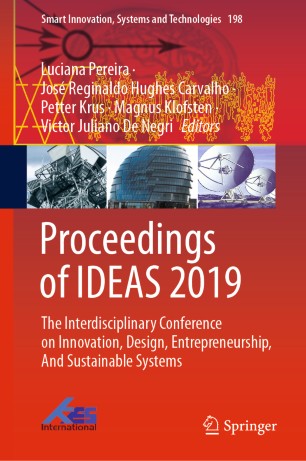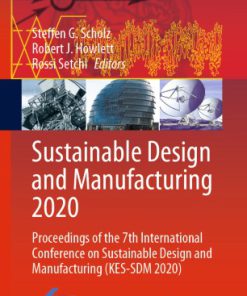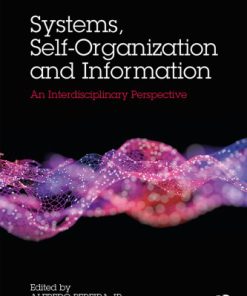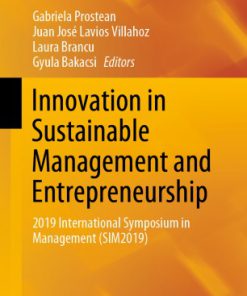Proceedings of IDEAS 2019: The Interdisciplinary Conference on Innovation Design Entrepreneurship And Sustainable Systems 1st edition by Luciana Pereira, Jose Reginaldo Hughes Carvalho, Petter Krus, Magnus Klofsten, Victor Juliano De Negri ISBN 3030553744 9783030553746
$50.00 Original price was: $50.00.$25.00Current price is: $25.00.
Proceedings of IDEAS 2019: The Interdisciplinary Conference on Innovation, Design, Entrepreneurship, And Sustainable Systems 1st edition by Luciana Pereira, José Reginaldo Hughes Carvalho, Petter Krus, Magnus Klofsten, Victor Juliano De Negri – Ebook PDF Instant Download/Delivery: 3030553744, 978-3030553746
Full dowload Proceedings of IDEAS 2019: The Interdisciplinary Conference on Innovation, Design, Entrepreneurship, And Sustainable Systems 1st Edition after payment

Product details:
ISBN 10: 3030553744
ISBN 13: 978-3030553746
Author: Luciana Pereira, José Reginaldo Hughes Carvalho, Petter Krus, Magnus Klofsten, Victor Juliano De Negri
This book presents the proceedings of the IDEAS Conference, which is intended as a forum for a new generation of researchers. IDEAS is an arena that encourages researchers to defy their field’s boundaries, leveraging disciplinary mindset into contributions to broad domains within the Science, Technology, Engineering, Entrepreneurship, and Management. Further, IDEAS explores novel questions and challenges existing policies and practices on how to apply science and technology as an input to design more innovative and sustainable systems that promote human well-being.
Proceedings of IDEAS 2019: The Interdisciplinary Conference on Innovation, Design, Entrepreneurship, And Sustainable Systems 1st Table of contents:
1. Barriers and Facilitators of Reverse Innovation: An Integrative Review
Key Focus:
Reverse innovation refers to the process where innovations are first developed in emerging markets and then spread to developed markets. This concept challenges the traditional flow of innovation from developed to developing countries.
Barriers:
- Cultural and Institutional Differences: Resistance to adopting practices or innovations that originate in emerging markets.
- Economic and Market Conditions: Lack of resources or a mismatch between the product and the needs of developed markets.
- Perceptions of Quality and Innovation: Negative perceptions of products from emerging economies being seen as inferior.
- IP Protection and Regulatory Challenges: Challenges in intellectual property rights and local regulations in different countries.
Facilitators:
- Globalization and Market Connectivity: Increased access to global markets and technologies through digital platforms.
- Cost Efficiency: Cost savings in emerging markets may lead to the development of products or services that are more affordable for global customers.
- Collaborative Innovation: Partnerships between companies in emerging markets and those in developed markets facilitate the transfer of knowledge.
- Adaptation and Customization: The ability to adapt and customize innovations from emerging markets to meet the needs of developed market consumers.
2. System Architecture of a Robotics Airship
Key Focus:
This topic explores the design and structure of robotics airships, which are unmanned, autonomous or semi-autonomous air vehicles. They have a wide range of applications, including surveillance, environmental monitoring, and logistics.
Key Elements of System Architecture:
- Autonomous Navigation System: Utilizing GPS, sensors, and AI algorithms to navigate and control the airship without human intervention.
- Communication Systems: Ensuring that the airship can transmit data and receive commands remotely.
- Power Systems: Typically solar-powered or hybrid systems to provide sufficient power for long-duration missions.
- Payload Systems: Includes cameras, sensors, or delivery modules depending on the application of the airship.
- Control Systems: Safety systems for obstacle avoidance, emergency landing protocols, and real-time decision-making capabilities.
3. The New Brazilian Legal Framework of Science & Technology: Barriers, Borders, and Opportunities for Innovation
Key Focus:
Brazil’s legal and regulatory framework plays a crucial role in fostering or hindering innovation and technological advancement. This framework involves laws and policies related to science, technology, intellectual property, and innovation.
Barriers:
- Bureaucracy: Complex and slow regulatory processes can delay or prevent innovation.
- Lack of Funding: Insufficient public and private investment in R&D, often exacerbated by economic downturns.
- Political and Economic Instability: Uncertainty surrounding political decisions can affect long-term technological projects.
- Intellectual Property Protection: Challenges around enforcing IP laws and protecting the rights of innovators.
Opportunities:
- Public-Private Partnerships (PPP): Facilitating collaboration between government entities and private businesses to promote innovation.
- Incentives for R&D: Tax exemptions and government programs to encourage investment in science and technology.
- Technology Transfer: Facilitating the movement of knowledge and technology from research institutions to the private sector.
- New Regulatory Reforms: Streamlining processes and improving intellectual property protection to foster a more innovation-friendly environment.
4. A Cyber Physical System Approach to Customer Services of Home Appliances
Key Focus:
Cyber-Physical Systems (CPS) combine computational elements with physical processes. This approach focuses on integrating smart technologies into home appliances to provide improved customer services.
Applications in Home Appliances:
- Remote Monitoring and Control: Using IoT-enabled devices to monitor and control home appliances (e.g., refrigerators, washing machines) remotely via smartphones or other devices.
- Predictive Maintenance: Sensors and analytics predicting when an appliance will fail or require maintenance, enhancing customer satisfaction.
- Energy Management: Smart appliances that optimize energy use based on user behavior and environmental factors, contributing to sustainability.
- Customer Interaction: Providing AI-driven recommendations and personalization of services, making the appliance more responsive to user needs.
5. Improvement in the Method of Assembly of a New Production Process in the PIM (Production and Inventory Management)
Key Focus:
This topic examines how the assembly process within the Production and Inventory Management (PIM) framework can be improved through better methods, tools, and technologies. PIM deals with ensuring that materials and products are available in the right quantities, at the right time, and at the right location.
Key Areas of Improvement:
- Automation of Assembly Processes: Introducing robotics and automation systems to improve speed, consistency, and quality of assembly lines.
- Lean Manufacturing: Reducing waste and inefficiency through better workflow design, inventory management, and employee training.
- Real-Time Monitoring: Implementing sensors and analytics to track assembly progress and ensure smooth operations.
- Integrated IT Systems: Using integrated ERP (Enterprise Resource Planning) systems to link production and inventory management systems, ensuring that materials are available when needed without excess.
6. The Strategic Role of MES Systems in the Context of Industry 4.0
Key Focus:
Manufacturing Execution Systems (MES) are software systems used to monitor, control, and manage manufacturing operations. Industry 4.0 involves the digitalization and automation of manufacturing processes with the use of technologies like IoT, AI, and big data analytics.
Strategic Role of MES in Industry 4.0:
- Real-Time Data Collection: MES systems collect data from the shop floor in real time, enabling companies to track the status of production, inventory, and quality.
- Integration with IoT: MES systems integrated with IoT devices can collect data from machines, sensors, and workers to optimize production.
- Advanced Analytics and AI: Leveraging machine learning and predictive analytics to optimize production schedules, maintenance schedules, and quality control.
- Supply Chain Visibility: MES systems play a key role in providing end-to-end visibility of the supply chain, from raw material sourcing to final product delivery.
- Automation and Digital Twins: MES helps implement automated workflows, and digital twin technology can simulate manufacturing processes for better optimization.
People also search for Proceedings of IDEAS 2019: The Interdisciplinary Conference on Innovation, Design, Entrepreneurship, And Sustainable Systems 1st:
proceedings of a conference
proceedings paper
conference proceedings citation
due process idea 2004
idea procedural violations
You may also like…
Cookbooks
Politics & Philosophy - Social Sciences












